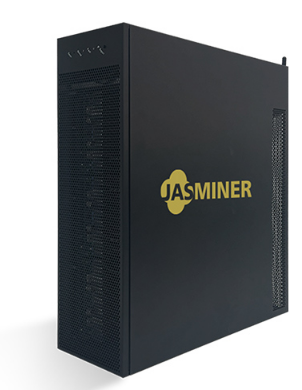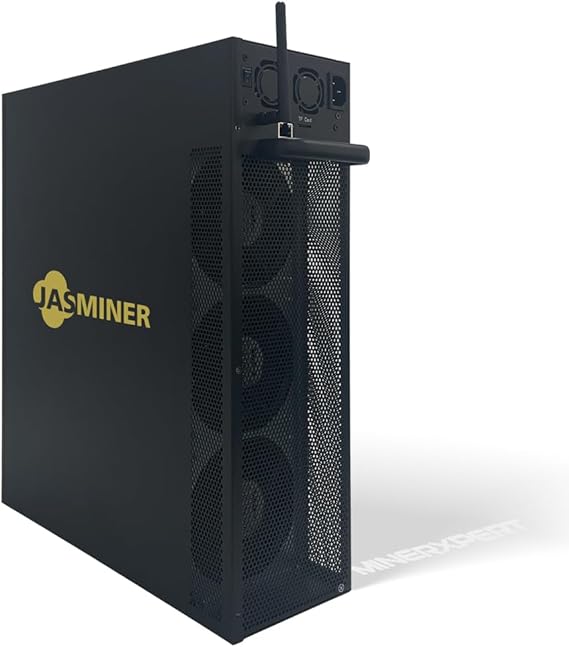JASMINER X16-Q Fan Noise Levels and How to Reduce Them
Introduction
The JASMINER X16-Q has quickly established itself as a top-tier mining solution for ETHash and ETC algorithms, combining high performance with remarkable energy efficiency. One of its standout features is its advanced cooling system, which operates at a whisper-quiet ≤40 dB—a rarity in high-performance mining hardware. However, even with this impressive baseline, miners operating in noise-sensitive environments (such as home setups or shared workspaces) may seek ways to further reduce fan noise without compromising performance.
In this article, we’ll explore the JASMINER X16-Q’s fan noise characteristics, why it matters, and practical strategies to minimize sound levels while maintaining optimal thermal performance.
Understanding Fan Noise in Mining Rigs
Why Fan Noise Matters
Mining rigs are notorious for their loud operation, primarily due to high-speed cooling fans required to dissipate heat from power-hungry ASICs and GPUs. Excessive noise can lead to:
- Discomfort in home mining setups – Constant high-decibel noise can be disruptive in residential environments.
- Workplace restrictions – Shared office spaces or small-scale mining farms may have noise regulations.
- Long-term hearing concerns – Prolonged exposure to loud machinery can affect hearing over time.
The JASMINER X16-Q addresses this challenge with an advanced triple-fan cooling system that balances airflow efficiency with acoustic comfort.

How the X16-Q Achieves Low Noise Levels
The X16-Q’s cooling system is engineered for efficiency:
- Three high-quality axial fans – Strategically placed for optimal airflow with minimal turbulence.
- Precision fan speed control – Dynamically adjusts RPM based on temperature, reducing unnecessary noise.
- Aerodynamic casing design – Minimizes air resistance, allowing quieter operation at lower fan speeds.
Despite these optimizations, some users may still seek additional noise reduction methods.

Measuring and Assessing Fan Noise
What Does ≤40 dB Actually Mean?
To put the X16-Q’s noise level into perspective:
- 30 dB – Quiet library
- 40 dB – Soft background music or a quiet office
- 50 dB – Moderate rainfall
- 60 dB – Normal conversation
At ≤40 dB, the X16-Q operates at a volume comparable to a quiet household appliance, making it one of the quietest miners in its class.

How to Measure Your Miner’s Noise
If you suspect your unit is louder than expected:
- Use a smartphone decibel meter app (e.g., Sound Meter or Decibel X).
- Place the phone 1 meter away from the miner for accurate readings.
- Compare results with the manufacturer’s specifications.
If noise exceeds 40 dB, consider the following optimizations.
5 Practical Ways to Reduce Fan Noise on the JASMINER X16-Q
1. Optimize Ventilation and Airflow
Poor airflow forces fans to work harder, increasing noise.
Solutions:
- Ensure at least 30 cm clearance around the miner for proper air intake/exhaust.
- Avoid enclosed spaces – Use open racks instead of cabinets unless soundproofing is applied.
- Position near cool air sources – Placing the miner near an air-conditioned vent can reduce thermal load.
2. Adjust Fan Speed Settings (If Supported)
Some mining firmware allows manual fan speed adjustments.
How to do it safely:
- Monitor temperatures closely – Keep chip temps below 70°C.
- Gradually lower fan speed – Test stability in 5% increments.
- Use auto-tuning if available – Some software optimizes fan curves for efficiency.
*Note: The X16-Q’s default thermal management is highly optimized—modifying settings should be done cautiously.*
3. Use Noise-Dampening Enclosures
For home miners, a soundproof enclosure can significantly reduce noise.
DIY Options:
- Acoustic foam-lined boxes – Absorbs high-frequency fan noise.
- Ventilated server cabinets – Pre-built mining enclosures with noise reduction.
- Anti-vibration pads – Reduces resonance noise from fan vibrations.
*Caution: Ensure proper airflow to prevent overheating.*
4. Replace Stock Fans with Quieter Alternatives (Advanced)
While the X16-Q’s fans are already optimized, some users may experiment with aftermarket options.
Considerations:

- Static pressure vs. airflow – Mining rigs need high static pressure to push air through heatsinks.
- Noctua or be quiet! fans – Premium brands known for silent operation.
- Check voltage compatibility – Ensure replacement fans match the miner’s power requirements.
*Warning: Modifying hardware may void warranties—proceed with caution.*
5. Environmental Adjustments
Small changes in room conditions can make a difference.
Tips:
- Lower ambient temperature – Cooler air reduces fan workload.
- Reduce dust buildup – Clean filters regularly to prevent airflow obstruction.
- Isolate the miner – Place it in a separate room or garage if possible.
When to Be Concerned About Fan Noise
While some noise is normal, unusual sounds may indicate issues:
| Sound Type | Possible Cause | Solution | |—————|——————-|————–| | Grinding/rattling | Bearing failure | Replace fan | | Intermittent buzzing | Loose components | Check screws & mounts | | High-pitched whine | Fan obstruction | Clean dust/debris |
If noise spikes suddenly, inspect the miner for mechanical issues.
Conclusion
The JASMINER X16-Q sets a new standard for quiet mining operations, with its ≤40 dB operation making it suitable for home and professional environments alike. By optimizing airflow, adjusting fan settings (where possible), and considering noise-dampening solutions, miners can further reduce sound levels without sacrificing performance.
For most users, the stock cooling system will provide the best balance of noise and efficiency. However, those in ultra-noise-sensitive settings can experiment with enclosures or environmental tweaks to achieve near-silent operation.
Ultimately, the X16-Q’s advanced thermal design ensures that—unlike many competing miners—you won’t have to choose between performance and peace and quiet.
Have you tried any of these noise reduction methods? Share your experiences in the comments!